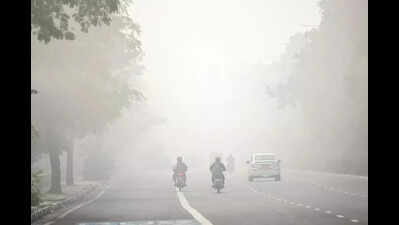- News
- Delhi breached PM10 limits every season from 2021 to 2024
Delhi breached PM10 limits every season from 2021 to 2024
New Delhi: A new study says that PM10 levels in Delhi breached safe limits in every season—including summer—across four years between 2021 and 2024. Air quality monitoring stations, such as Anand Vihar and Dwarka Sector-8, consistently recorded levels four to five times above the national safety standard.
The study by Respirer Living Sciences, a climate-tech startup for cleaner air, said Delhi's average PM10 concentrations remained consistently elevated between 2021 and 2024. The PM10 levels in Delhi were recorded at 214.4 micrograms per cubic metre in 2021, 212.8 micrograms per cubic metre in 2022, 206.4 micrograms per cubic metre in 2023, and 214.3 micrograms per cubic metre in 2024.
"These values exceed the National Ambient Air Quality Standards (NAAQS) threshold of 60 micrograms per cubic metre, with no single year demonstrating a significant improvement. This indicates that even during the summer months, when improved meteorological conditions typically result in lower pollution levels, PM10 concentrations remained consistently above permissible limits," said the study.
Anand Vihar ranked among the worst-polluted sites, with PM10 levels rising from 274.1 micrograms per cubic metre in 2021 to 317.4 micrograms per cubic metre in 2022, and settling at 313.8 micrograms per cubic metre in 2024. PM10 concentration at Dwarka Sector-8 jumped from 249.2 micrograms per cubic metre in 2021 to 313.5 micrograms per cubic metre in 2024.
The report attributes sustained PM10 levels to high vehicle density and diesel-run public transport, brick kilns around the city contributing to particulate pollution, unpaved roads and dust resuspension, and open waste burning.
End of Article
Follow Us On Social Media










